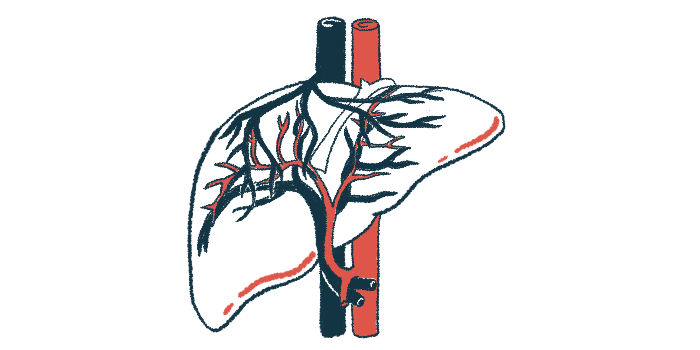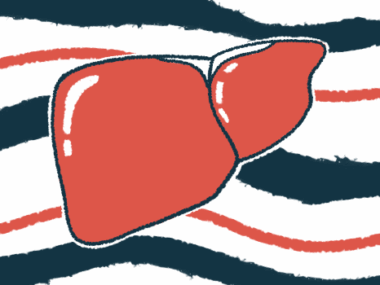Study identifies predictor of serious liver complication in biliary atresia
Findings may help identify patients who need closer monitoring
Written by |

Having persistently high blood levels of bilirubin, a marker of liver damage, a year after undergoing a corrective liver surgery called the Kasai procedure increases the likelihood of a serious liver complication known as portal hypertension in children with biliary atresia.
That’s according to a multicenter study in Hong Kong and Japan that determined bilirubin levels higher than 38 micromoles per liter one year after surgery could help to discriminate patients with portal hypertension from those without the complication.
Given that more than one-third of the children developed portal hypertension five years after surgery, these findings may help to identify those needing closer monitoring because of their higher risk, researchers note.
The study, “Cholestasis after Kasai operation predicts portal hypertension in native liver survivors of biliary atresia: a multicenter study,” was published in Pediatric Surgery International.
In biliary atresia, the ducts that carry bile, a digestive fluid, from the liver to the small intestine are blocked or absent. This leads to bile accumulation in the liver, promoting liver scarring (fibrosis), and bile leakage into the bloodstream, which results in symptoms such as jaundice, or yellowing of the skin and whites of the eyes.
First-line treatment for biliary atresia is Kasai procedure
The first-line treatment is a Kasai procedure, or Kasai portoenterostomy, which restores the flow of bile by creating an alternate route into the small intestine that bypasses the blocked ducts.
While this can delay or eliminate the need for a liver transplant, “up to 50% of [patients] will suffer from residual complications owing to progressive liver fibrosis,” the researchers wrote.
Portal hypertension, or high blood pressure in a large blood vessel that drains into the liver, is the most common and life-threatening liver complication in biliary atresia patients. Its presence also increases the chances of needing a liver transplant in the future.
Portal hypertension “can develop as early as 1 to 2 years after [Kasai procedure] but in most cases, it takes a few years to become clinically significant,” the researchers wrote. “However, a prediction before its onset is difficult due to the lack of reliable indicators.”
With this in mind, a team of researchers in Hong Kong and Japan first investigated the frequency of portal hypertension in 320 children who did not require a liver transplant in the five years following a Kasai procedure. Then, they set out to identify potential predictors of that disease-related complication.
The children underwent the procedure at six pediatric surgery centers across the two regions from 1980 to 2018. The mean age at surgery was 54.8 days, or nearly 8 weeks, and the children were followed for an average 10.6 years.
One year after surgery, nearly two-thirds (63.4%) had achieved jaundice clearance, defined as blood bilirubin levels less than 20 micromoles per liter. Bilirubin is an orange-yellow pigment of bile that is thought to underlie jaundice.
37.8% of children developed portal hypertension 5 years after surgery
Five years after surgery, 37.8% of children had developed portal hypertension. These children were a mean 4.4 years older than those without portal hypertension (14.1 vs. 9.7 years).
Up until about 2 months old, a younger age at surgery was associated with lower rates of portal hypertension, with the lowest being observed among children undergoing the procedure before they were 41 days old, or about one month of age.
However, no significant difference was found in age at surgery between patients with or without portal hypertension.
One year after surgery, children with jaundice clearance were significantly less likely to have portal hypertension than those without (62.8% vs. 80.8%). Children with portal hypertension had significantly higher bilirubin levels in the blood (27.1 vs. 12.3 micromoles per liter).
Persistent jaundice 1 year after surgery linked to portal hypertension
Statistical analyses showed persistent jaundice, or bilirubin levels of at least 20 micromoles per liter, one year after surgery was significantly associated with a higher likelihood, by about 13 times, of having portal hypertension.
Furthermore, having a bilirubin level greater than 38 micromoles per liter one year after surgery predicted portal hypertension with a sensitivity of 78% and a specificity of 60%.
Sensitivity refers to how well the test can correctly identify those with a given condition, in this case portal hypertension, while specificity refers to the percentage of unaffected cases being correctly ruled out.
Because children with persistent jaundice may be at an increased risk for portal hypertension, “they should receive a more vigilant follow-up,” the researchers wrote, emphasizing also the possibility of portal hypertension even in patients who did not need transplants.
Undergoing a Kasai procedure early has been linked to better outcomes and prolonged survival for patients in previous studies, so an “effort should be made to facilitate an early [Kasai portoenterostomy] for its protection against [portal hypertension],” the researchers concluded.








